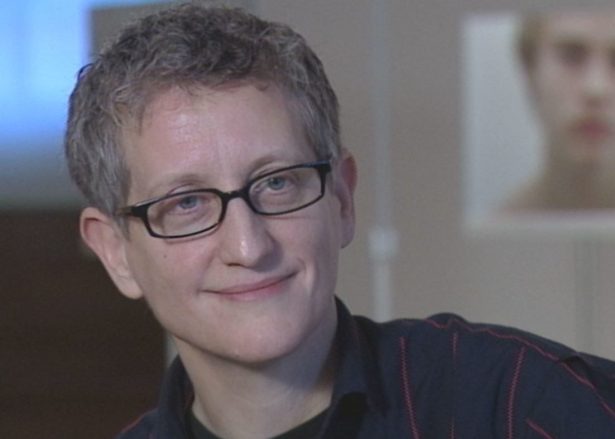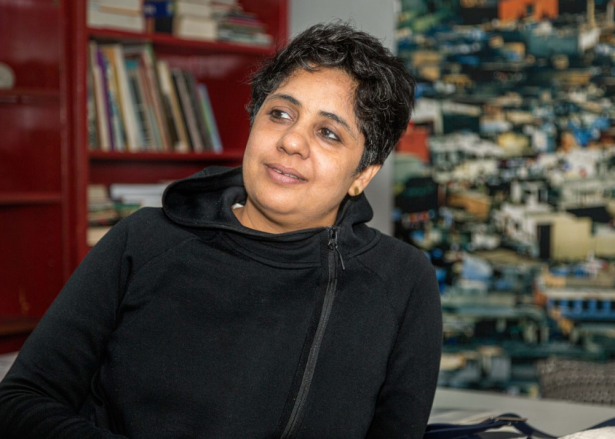This post comes from the Artists and Climate Change Blog
It is a full year since I began writing this monthly series on artists who are focusing on the topic of water – water pollution, melting glaciers, rising tides, plastic in the seas and killing drought. What I have learned from the extensive research I’ve conducted and the many artists I’ve contacted is that there is a groundswell of poets, painters, musicians, architects, filmmakers, craftsmen, sculptors, public artists, playwrights, dancers, spoken word artists, novelists and installation artists all over the world with passion, energy and determination to address and educate the public through art about the very real threats to our most precious natural resource.
Like poet Kathy Jetnil-Kijiner, these artists come from the Pacific Islands, where the tides already “gnaw at the shoreline, chew at the roots of your breadfruit trees, gulp down rows of your seawalls and crunch your island’s shattered bones.†They come from the Northern regions of our planet, like Islandic/American artist, Roni Horn and Danish artists, Bjornstjerne Christiansen, Jakob Fenger and Rasmus Nielsen, where glaciers are melting at a rapid pace. In tribute, they are building monuments – a permanent library of water containing samples from all of the regional glaciers (Horn) and even a mock McDonald’s restaurant flooded with water to show what happens when “a rising tide caused by global warming claimed the very thing that contributed to it.†(Christiansen et al.)



Danish artists/filmmakers, Rasmus Nielsen, Jakob Fenger, Bjørnstjerne Christiansen of the Collective Superflex.
The artists also come from lands where there is not enough water or enough clean water for a viable future, like the 10 prominent musicians from Cape Town, South Africa who took on the challenge of creating 2-minute shower songs to help the local population limit their water use during a severe water crisis; or like Indian artist Vibha Galhotra, who used the thick sludge from the toxic river Yamuna as a medium for her paintings in order to stress how dangerous the river water is to the health of the New Delhi population.

Vibha Galhotra, New Delhi conceptual artist.
They are innovators like Peter Thiel and Patri Friedman, who are designing seasteading colonies that offer a new way of living on the sea itself; and like Ben Morison, Ali Skanda and Dipesh Pabari, who developed the know-how to build the first traditional Swahili dhow in Lamu, Kenya, entirely out of plastic waste. And speaking of plastic, there are scores of artists like Karen Hackenberg, who are incorporating images of discarded plastic objects in their paintings to emphasize the significance of plastic in our contemporary culture and to call attention to the billions of tons of plastic that are choking our oceans and polluting our shores.



American painter, Karen Hackenberg.
Some artists engage the public as integral components of their work, like Native American Uncà Carole, whose annual river walks honor and attempt to heal threatened waterways for the sake of the “seven generations to come;†like Dutch artist Daan Roosgaarde, whose “Waterlicht†light installation provided visitors all over Europe with the visceral experience of rising seas overtaking the city; and like me and my fellow artist Elena Kalman, who along with thousands of participants from all walks of life and from cities and towns throughout the United States, are making a literal Wave, piece by piece, that emphasizes how we are all connected by our mutual need for water and by our mutual responsibility to protect our vital water sources.



American public artists Elena Kalman and Susan Hoffman Fishman, co-founders of The Wave, an interactive, public art project.
What If?
All of the artists I’ve covered this past year give me hope that we will ultimately win the battle to clean our rivers and oceans and make progress on mitigating the impact of climate change. They and an army of others are working hard to reach citizens and policy makers all over the world – to engage their hearts, minds and senses, which hopefully in turn will translate into caring and action.
But what if these individual artists weren’t operating alone in their own studios, in their own cities and countries? What if they came together in one place to create interdisciplinary projects with each other that then dispersed and reached millions all over the world? Theatrical productions with dramatic music, lighting, dance and scenic imagery held on a plastic stage that traveled the seas from port to port on a plastic boat? Or a poem created by thousands and thousands of poets and other artists that was broadcast globally? Imagine an international festival of art, the mother of all artist residencies, devoted entirely to addressing water pollution, melting glaciers, rising tides, plastic in the seas and killing drought – a movement of artists working in the same place at the same time that would create a “storm†of public art the likes of which we have never experienced. Who was it that said, “if you build it, they will come.?†Let’s build it.
(Top image:Â Three of the 10 South African musicians who created 2-minute shower songs.)
 ______________________________
Susan Hoffman Fishman is a painter, public artist, writer, and educator whose work has been exhibited in numerous museums and galleries throughout the U.S. Her latest bodies of work focus on the threat of rising tides caused by climate change, the trillions of pieces of plastic in our oceans and the wars that are predicted to occur in the future over access to clean water. She is also the co-creator of two interactive public art projects: The Wave, which addresses our mutual need for and interdependence on water and Home, which calls attention to homelessness and the lack of affordable housing in our cities and towns.
Artists and Climate Change is a blog that tracks artistic responses from all disciplines to the problem of climate change. It is both a study about what is being done, and a resource for anyone interested in the subject. Art has the power to reframe the conversation about our environmental crisis so it is inclusive, constructive, and conducive to action. Art can, and should, shape our values and behavior so we are better equipped to face the formidable challenge in front of us.


